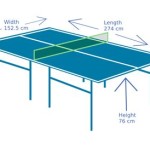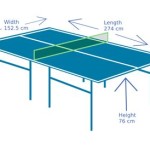Designing a Vegetable Garden with Raised Beds
Raised bed vegetable gardening is a fantastic way to grow your own fresh, organic produce. It offers numerous benefits, including improved drainage, better soil quality, and extended growing seasons. To design an effective raised bed garden, consider the following essential aspects:
1. Bed Size and Shape: The size and shape of your raised beds will depend on the available space and the vegetables you want to grow. Long, rectangular beds (3-4 feet wide and any length) are common because they maximize growing area and accessibility. You can also opt for square or L-shaped beds to fit specific spaces.
2. Bed Height: The optimal bed height varies depending on the soil type and drainage. Well-drained soils may require 6-8 inches of raised soil, while poorly drained soils may need beds as high as 12-15 inches. Higher beds are ideal for deep-rooted vegetables like carrots and tomatoes.
3. Materials: Choose bed materials that are durable, weather-resistant, and safe for vegetable gardening. Popular options include cedar, redwood, untreated pine, and galvanized steel. Avoid using treated lumber, as it can leach harmful chemicals into the soil.
4. Soil Preparation: Fill your raised beds with a high-quality potting mix or a mixture of topsoil, compost, and organic matter. Amend the soil with fertilizers or compost to ensure optimal nutrient availability for your plants.
5. Crop Rotation: Plan your crop rotation to maximize soil health and prevent diseases. Divide your raised beds into sections and rotate different vegetable families (e.g., tomatoes, leafy greens, legumes) through each section each growing season.
6. Companion Planting: Companion planting involves growing compatible plant species together to enhance growth and deter pests. Research which plants complement each other and group them accordingly in your raised beds.
7. Irrigation: Water is vital for plant growth. Install an irrigation system, such as drip lines or a bubbler system, to ensure proper watering at the root zone. Mulching around plants helps conserve moisture and suppress weeds.
8. Sunlight: Vegetables need ample sunlight for optimal growth. Choose a location for your raised beds that receives at least 6-8 hours of sunlight per day. Sun exposure is crucial for photosynthesis and plant health.
9. Accessibility: Ensure that your raised beds are accessible for maintenance and harvesting. Leave enough space between beds for easy access and provide pathways for convenient movement around your garden.
10. Aesthetics: Raised bed vegetable gardens can be both functional and aesthetically pleasing. Consider the layout and design of your raised beds to create a visually appealing and inviting space.
By incorporating these essential aspects into your design, you can create a thriving and productive raised bed vegetable garden that will provide you with fresh, healthy produce for years to come.

4x8 Raised Bed Vegetable Garden Layout Ideas What To Sow Grow

Planning Your Vegetable Garden Mapping The Beds

4x8 Raised Bed Vegetable Garden Layout Ideas What To Sow Grow

Flower Bed And Raised Ideas

Raised Bed Vegetable Garden Plan Modern Frontierswoman
:max_bytes(150000):strip_icc()/September-Garden-4-27714c582b0d4ceaad95c9c24aaac9d9-25fe181085014f4381c4323f8ff30f3f.jpg?strip=all)
31 Easy And Inexpensive Diy Raised Garden Bed Ideas

4x8 Raised Bed Vegetable Garden Layout Ideas What To Sow Grow Beds

Plans For Small Space Vegetable Gardens Gardener S Supply

Raised Bed Garden Design How To Layout Build

Raised Bed Garden Layout Plans The Old Farmer S Almanac








